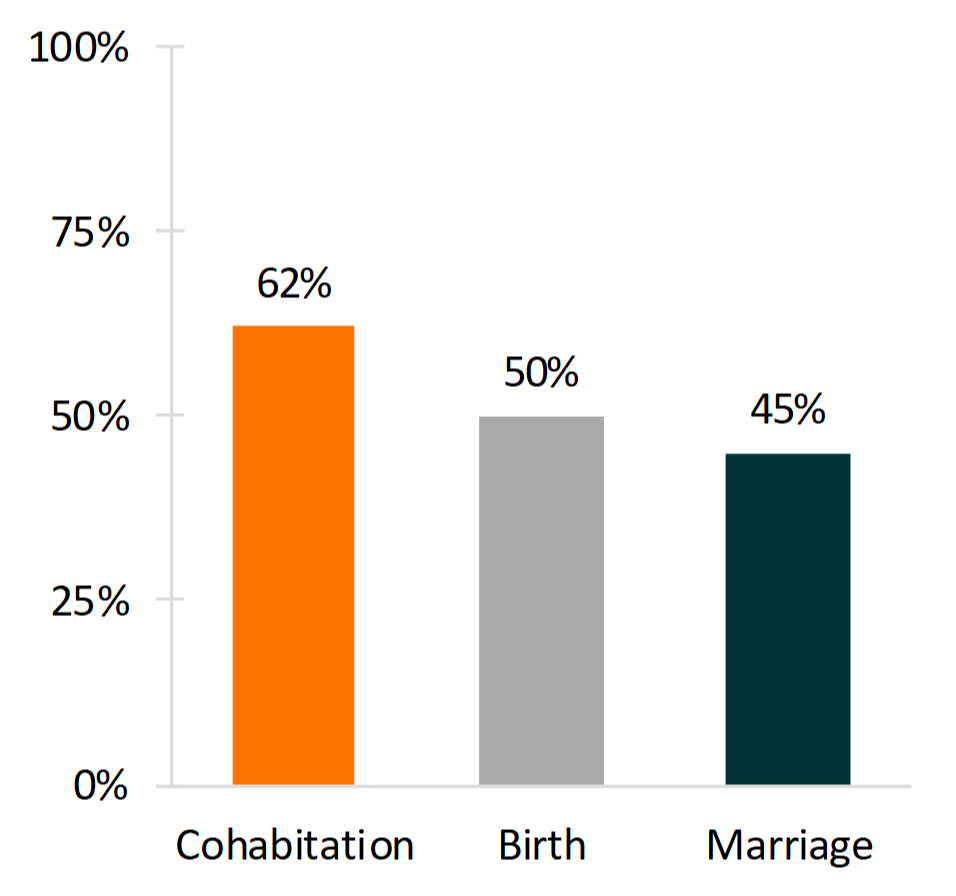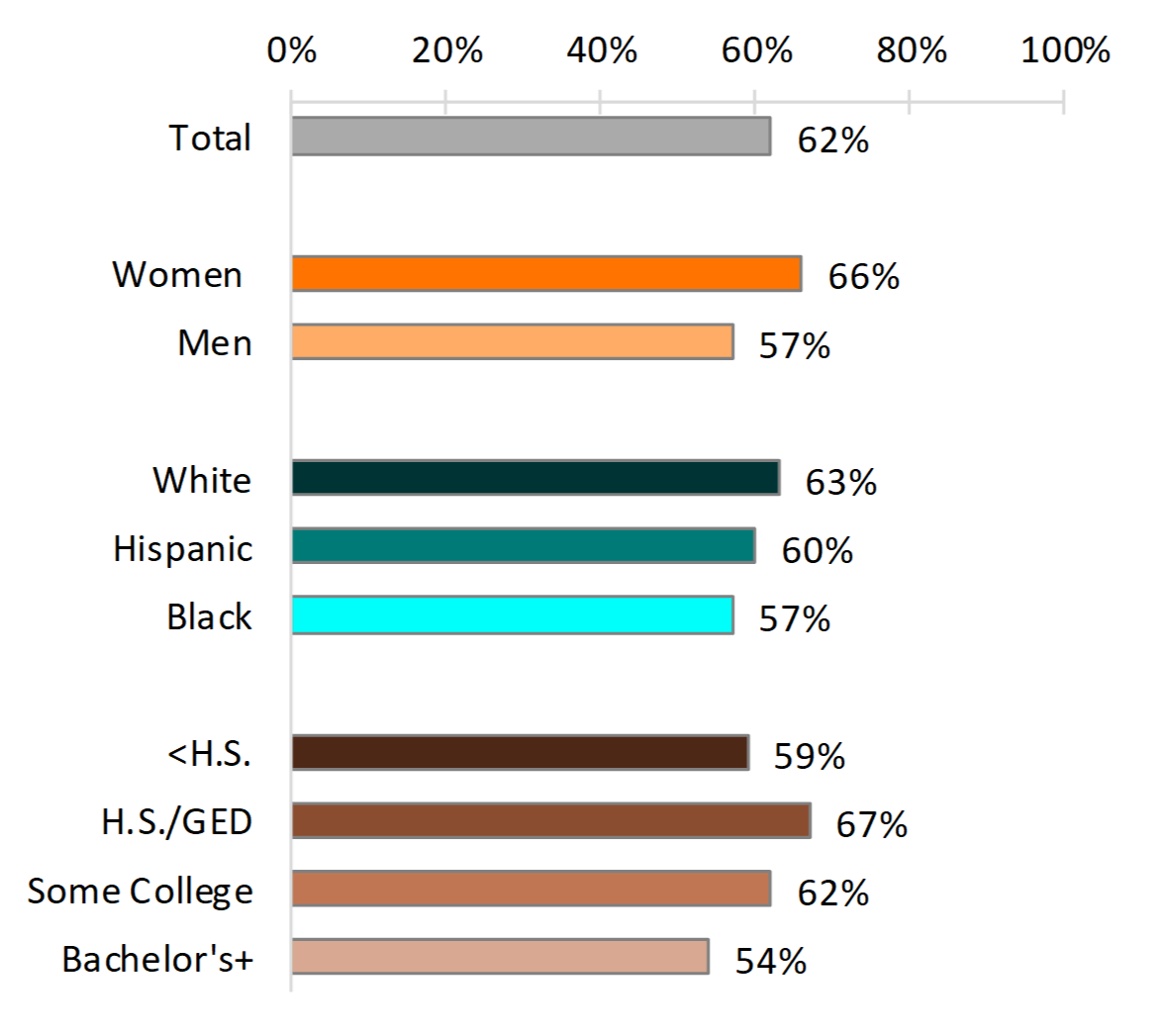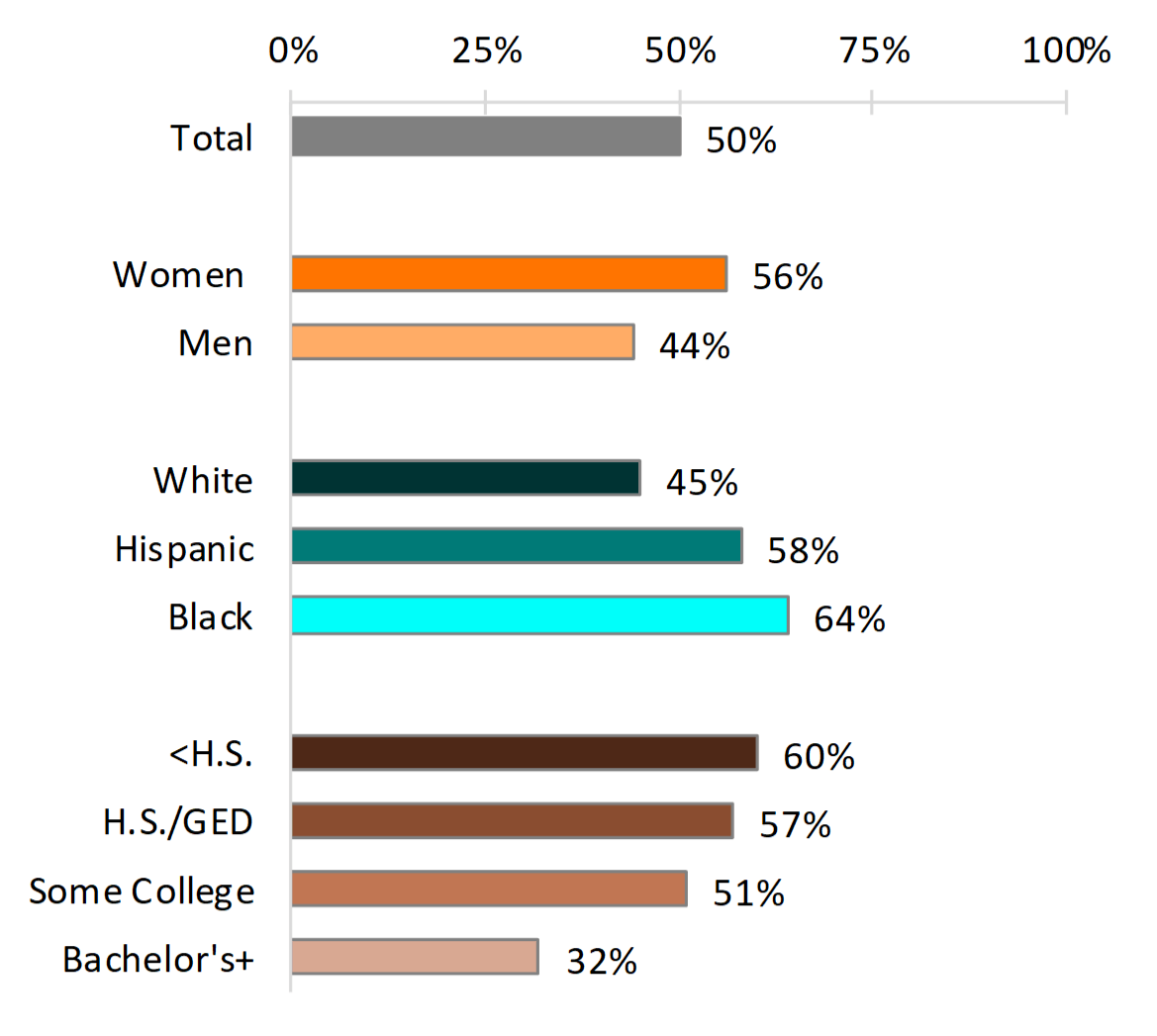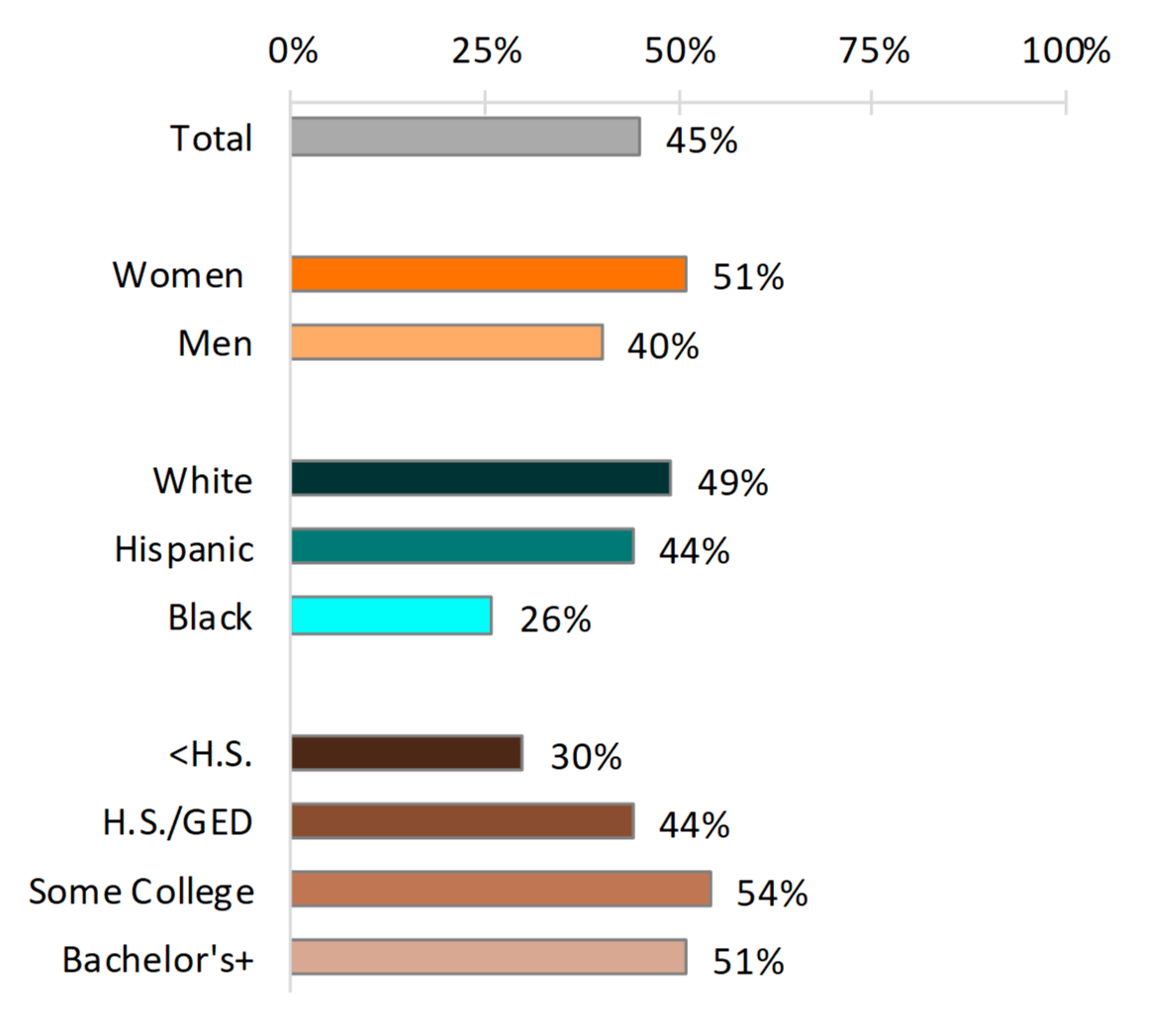Young Adulthood: Cohabitation, Birth, and Marriage Experiences
Family Profile No. 22, 2018
Author: Paul Hemez
Forming a family by having a child or living with a romantic partner (especially in marriage) is considered a marker of adulthood. However, young adults’ experiences of family formation behaviors have shifted over time. As young men and women wait longer to have children or get married (FP-16-07; FP-17-22), and cohabitation has become a more common experience in recent decades (FP-17-02). Using rounds 1-17 of the National Longitudinal Survey of Youth 1997, this Family Profile examines the share of young adults who had a child, got married, and/or cohabited before their 30th birthday for the cohort of men and women who were born between 1980 and 1984.
Cohabitation, Parenthood, and Marriage Experience in Young Adulthood
- Among the three family formation experiences considered, cohabitation was the most common – over six in ten young adults had cohabited prior to their 30th birthday.
- Overall, half of young adults had become a parent by their 30th birthday.
- Marriage was the least common family formation experience, as only 45% of young adults had married by age 30.
Figure 1. Percentage of Young Adults Who Experienced Cohabitation, Parenthood, and Marriage Before Age 30

Cohabitation Experience in Young Adulthood
A larger share of women (66%) cohabited during young adulthood than their male counterparts (57%).
- Having cohabited prior to age 30 was most common for Whites (63%) followed by Hispanics (60%) and Blacks (57%).
- Men and women with a high school degree or GED experienced cohabitation more often (67%) relative to other educational attainment groups, whereas those with a Bachelor’s degree or more had the lowest share of cohabitation experience (54%).
Figure 2. Percentage of Young Adults Who Cohabited Before Age 30, by Select Demographic Characteristics

Parenthood Experience in Young Adulthood
- A larger share of women (56%) became parents during young adulthood than men (44%).
- More than half of Hispanics (58%) and nearly two- thirds of Blacks had a child before their 30th birthday compared to 45% of Whites.
- A bout six in ten of those with less than a high school education became parents during young adulthood. On the other hand, among men and women holding a Bachelor’s degree or more, slightly over three in ten became a parent by age 30.
Figure 3. Percentage of Young Adults Who Experienced Parenthood Before Age 30, by Select Demographic Characteristics

Marriage in Young Adulthood
- More than half (51%) of w omen born between 1980 and 1984 married prior to their 30th birthday. Among men who were born between these years, about 40% had married by age 30.
- Marriage experience during young adulthood was almost twice as common for Whites (49%) than it was for Blacks (26%). Hispanic young adults had a slightly lower share of marriage experience (44%) than Whites.
- Over half of those with an Associate’s or Bachelor’s degree married before the age of 30, whereas less than one-third of those with less than a high school degree had married.
Figure 4. Percentage of Young Adults Who Married Before Age 30, by Select Demographic Characteristics

References
- Anderson, L (2016). Median age at first marriage, 2014. Family Profiles, FP-16-07. Bowling Green, OH: National Center for Family & Demographic Research. https://www.bgsu.edu/ncfmr/resources/data/family-profiles/anderson-payne-median-age-first-marriage-fp-16-07.html
- Bureau of Labor Statistics, U.S. Department of Labor. National Longitudinal Survey of Youth 1997 cohort, 1997-2015 (rounds 1-17). Produced by the National Opinion Research Center, the University of Chicago and distributed by the Center for Human Resource Research, The Ohio State University. Columbus, OH: 2015.
- Eickmeyer, K. J., Payne, K. K., Brown, S. L., & Manning, W. D. (2017). Crossover in the median age at first marriage and birth: Thirty-five years of change. Family Profiles, FP-17-22. Bowling Green, OH: National Center for Family & Demographic Research. https://www.bgsu.edu/ncfmr/resources/data/family- profiles/eickmeyer-payne-brown-manning-crossover-age-first-marriage-birth-fp-17-22.html
- Hemez, P., & Manning, W. D. (2017). Over twenty-five years of change in cohabitation experience in the U.S., 1987-2013. Family Profiles, FP-17-02. Bowling Green, OH: National Center for Family & Demographic Research. https://www.bgsu.edu/ncfmr/resources/data/family-profiles/hemez-manning-25- years-change-cohabitation-fp-17-02.html
Suggested Citation
- Hemez, P. (2018). Young adulthood: Cohabitation, birth, and marriage experiences. Family Profiles, FP-18-22. Bowling Green, OH: National Center for Family & Marriage Research. https://doi.org/10.25035/ncfmr/fp-18-22.


This project is supported with assistance from Bowling Green State University. From 2007 to 2013, support was also provided by the U.S. Department of Health and Human Services, Office of the Assistant Secretary for Planning and Evaluation. The opinions and conclusions expressed herein are solely those of the author(s) and should not be construed as representing the opinions or policy of any agency of the state or federal government.
Updated: 04/06/2021 01:31PM

